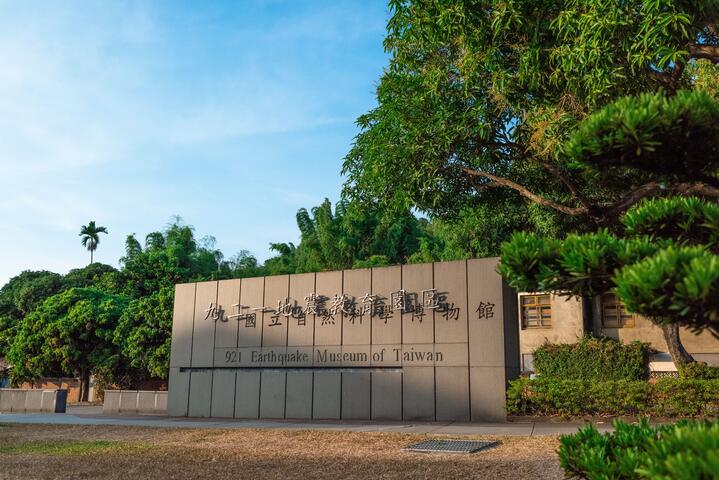National Museum of Natural Science 921 Earthquake Education Park Introduction
On September 21, 1999, at 1:47 AM, Taiwan experienced a powerful earthquake measuring 7.3, the largest in a century, causing severe destruction. After the earthquake struck, Guangfu Junior High School in Wufeng District was severely affected due to the presence of the Changhua Fault, with the eastern playground experiencing a 2.5-meter uplift, several school buildings suffering severe damage and collapse. The altered landscape and the condition of the structures post-quake were starkly evident. After geological experts surveyed the epicenter, they recommended that the disaster area at Guangfu Junior High School be redeveloped into an "Earthquake Memorial Museum" to preserve the earthquake's original site, record the history of the earthquake, and serve as a living educational resource for the public and schools regarding earthquakes. The "National Museum of Natural Science 921 Earthquake Education Park" opened to the public on September 21, 2004, featuring main exhibition halls such as the "Changhua Fault Preservation Hall" and the "921 Image Hall," as well as a "921 Water-Friendly Pool" converted from an old swimming pool. The Fault Preservation Hall serves a significant educational purpose, using various models to explain the causes of earthquakes and the patterns of geological displacements. Visitors can engage with interactive instruments to gain a vivid understanding of earthquakes. The surface dislocation caused by the 921 earthquake is evident at Guangfu Junior High School, with the Changhua Fault having a maximum uplift of 9.8 meters, making it a rare geological phenomenon in the world. The Image Hall preserves all images and audiovisual materials recorded during the 921 earthquake and also offers precious historical documents that allow people to understand Taiwan's earthquake history. It reflects natural changes through history or the fearful expressions in disaster photographs, fostering a deep empathy for the helplessness faced during earthquakes, encouraging a reflection on human fragility and the vulnerability of life. Fortunately, amidst disasters and merciless changes, one can also witness the precious aspects of humanity; the determined and compassionate eyes of rescue personnel in photographs remind us to be grateful for the caring spirit in Taiwan. Walking through the Image Hall, the experience of the 921 earthquake transcends mere external shock, delving deep into the heart. Before exiting the Image Hall, there is a collection showcasing models and illustrations of schools that received the "Special Award for Campus Reconstruction" at the Far Eastern Architectural Award for their rebuilding efforts after the earthquake, presenting images of beautiful new school buildings that strongly convey the power of rebirth, writing a new and beautiful chapter in history. As you leave, the painful memories can remain in the museum without the need to carry them away; instead, recall the strength of those who have risen from ashes and feel the resilience of life, believing that this visit was well worth it!






































